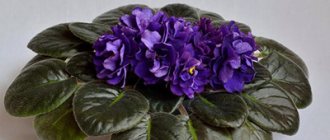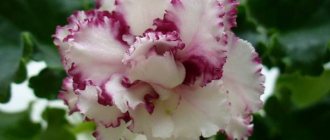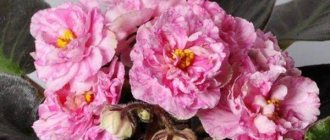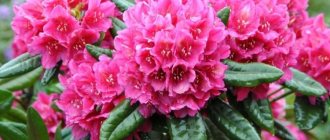The beginning of gooseberry culture in Russia dates back to the 11th century. Its berries are rich in easily digestible sugars and organic acids, contain pectin and vitamins C, B, A, PP. Gooseberries are delicious to eat fresh and can be safely processed into a variety of original preparations - from jams and sauces to wines and jellies. It is also a valuable early honey plant.
Yes, here’s one nuisance - the shoots of this crop are too “spiked”. By the time you reap the harvest, you will be scratched and scratched all over - the same picture occurs when pruning or processing shrubs. Therefore, among many summer residents, gooseberry varieties with weakly thorny shoots are mainly popular. Moreover, among these today you can already choose gooseberries with berries of different sizes, colors and tastes, which are quite unpretentious to growing conditions, productive and resistant to diseases.
We have already told you in detail how to plant and grow such thornless gooseberries on your site, today we will talk about its most successful varieties.
We have tried to compile for you the most popular, productive and sweet varieties of thornless gooseberries - pink, white, red, yellow, green, black - take your pick!
Gooseberry Consul (Senator)
Russian selection variety of medium ripening period.
The variety is self-fertile, winter-hardy, the yield increases gradually with age (from 3 kg from a young plant to 6-7 kg from an adult bush), tolerates short-term drought well, and is highly resistant to diseases. The duration of fruiting is about 40 days.
The bush is vigorous, dense, and quite spreading. The shoots are erect or slightly curved, of small thickness. There are no thorns or there are weak single ones, but in insignificant quantities in the lower part of the shoots.
The leaves are medium-sized, three-lobed, green, slightly shiny, wrinkled, on thin, long, slightly pubescent petioles. The flowers are small, bright, inflorescences are one-, two- or three-flowered.
The berries are medium-sized (3-6 g), one-dimensional, round-oval, red and very dark red in color with clearly visible light veins, with a matte surface without pubescence. The skin is thin but dense, the flesh is tender, aromatic, translucent. The overall taste is sweet and sour, dessert with a hint of kiwi, a universal berry. Transportability is excellent.
Description
Scientists breeders do not stand still in their research into new gooseberry selection. Every year, varieties of fruit crops appear on the market, and some of them meet the highest characteristics characteristic of gooseberries.
There are several varieties and varieties of thornless varieties of berry bushes, differing in the following characteristics:
- Hybrid varieties of the crop produce sharp thorns at the beginning of the growing season, but during the period of ovary formation the thorns disappear.
- Thorns are found exclusively on old branches.
- Gooseberry bushes with few or soft thorns.
- Also, sharp spines may appear and disappear depending on climatic conditions, proper care and age of the plants.
Reference! Hybrid gooseberry bushes without thorns are taller and more spreading and require annual pruning.
Ural thornless gooseberry (Ark)
Russian selection variety of medium ripening period.
The variety is winter-hardy, high-yielding (4-9 kg per bush), demanding on watering, but tolerates short-term drought well, and is resistant to diseases.
The bush is vigorous, slightly spreading, of medium density. Most shoots grow vertically; lateral shoots may deviate slightly to the sides. Thorns are absent or present, but in small quantities, in the lower part of the shoots.
The leaves are medium-sized, three-lobed, dark green, glossy, concave, wrinkled, on small, pubescent petioles. The buds are painted bright crimson. The flowers are medium-sized, pink, and fade over time.
The berries are large (6-9 g), one-dimensional, round-oval, bright green in color with clearly visible light veins, with a matte surface without pubescence. The skin is dense, medium thickness, sour, the flesh is juicy, sweet, and the aroma is pleasant. The berries are easily torn from the branches and are prone to shedding when fully ripe. The general taste is sweet and sour, dessert, universal berries. Transportability in unripe form is excellent.
How and at what time to prune shoots
Trimming times:
It is advisable to prune young shoots in early spring, before the buds open, so the plant will endure this process less painfully. If it was not possible to remove excess branches in the spring, then you can leave this work until the fall.
pruning shoots
Trimming rules:
- It is advisable to cut off excess branches to the very base, then just form a bush. An adult bush (three years old) must consist of at least 25 branches, in which case it will be strong and strong. Typically, multi-stemmed bushes produce a stable and high yield for several years.
- You should not rush to prune young gooseberries; in many varieties, the trunk is formed by the end of the fourth year, so unknowingly you can remove fruit-bearing branches.
- Usually about five strong basal shoots are left, the rest are removed. Branches must be selected from all sides of the bush so that the bush has the same shape.
- The shoots (that are left) are shortened by about half. Next year, select one strong shoot from each branch and cut it in half. Repeat the procedure for about three years until the bush becomes large and strong.
- When the bush is formed, excess and dry branches are periodically removed, making sure that the branches do not lie on the ground.
- After eight years, the main branches will begin to reduce productivity, so it is necessary to select the strongest ones from the young shoots and repeat the process again, forming an almost young bush, replacing old and diseased branches with new ones - young ones.
- Branches up to the third order are considered the most productive; branches of the fourth and fifth order are unproductive, which is why they try to cut them off.
- An old gooseberry can be gradually put in order if you first cut out excess, diseased and old branches, and then gradually begin to form a bush.
With a question about how to prune gooseberries
we figured it out. But all fruit trees and shrubs require pruning.
Share with your friends on social networks!
The site “In the Garden and Vegetable Garden” is not commercial; we present the personal experience of the authors for dacha lovers - gardeners, gardeners and flower growers.
sferasada.ru
Gooseberry Grushenka
A variety of Russian selection with a medium-late ripening period.
The variety is winter-hardy, medium-yielding (4-6 kg per bush), demanding on soil, tolerates drought well and is overly sensitive to excess moisture. The variety is resistant to powdery mildew, anthracnose and septoria. The variety is early-bearing, but has a short fruiting period.
The bush is medium-sized, semi-spreading, heavily leafy, prone to thickening. The shoots are long, branching, drooping - an adult bush requires garter and regular pruning. There are practically no thorns.
The leaves are medium-sized, five-lobed, green, glossy, slightly wrinkled, on small, hairless petioles. The inflorescences are one-, two- or three-flowered and are borne in large quantities along the shoot.
The berries are medium-sized (3-7 g), one-dimensional, oval-pear-shaped, dark purple (plum) in color, with a matte surface without pubescence. The skin is dense, of medium thickness, the flesh is juicy, sweet and sour, the aroma is pleasant and rich. The berries are not prone to cracking and shedding. The general taste is sweet and sour, dessert, universal berries. Transportability is excellent.
Classification of varieties by region
To get a rich gooseberry harvest, you need to grow zoned varieties. Otherwise, all worries and agricultural techniques will be useless.
The table below will help you figure out which varieties are best suited for which regions.
| Gooseberry variety | Regions |
| Goliath, Beryl, Ural emerald, Scamp, White nights | West Siberian, Ural |
| Bottle green, Spring, Russian yellow, African, Grushenka, Chernomor, Sirius, Strawberry | Center of Russia, Volgo-Vyatka region, Moscow, Leningrad region |
| Kolobok, Eaglet, Aristocrat, Seedling Lefora, Candy | Central, Volga-Vyatka, Central Black Earth, East Siberian, Ural |
| Pax | Lower Volga region (Saratov region) |
| Cooperator | Ural region |
Choosing the best gooseberry variety that suits your taste and is suitable for local climatic conditions is not difficult. Among their diversity, there are both technical and dessert varieties, frost-resistant and not so frost-resistant, thornless and with thorns. But they all generously provide a harvest of healthy berries.
Gooseberry Commander (Vladil)
Russian selection variety with mid-early ripening period.
The variety is winter-hardy, high-yielding (5-7 kg per bush), unpretentious in cultivation, characterized by good self-fertility, resistant to fungal infections, and practically not affected by aphids, moths and sawflies.
The bush is medium-sized, slightly spreading, of medium density. The shoots are thin, upright, mostly thornless (single thorns are thin and sparse).
The leaves are medium-sized, three- and five-lobed, dark green, glossy, slightly wrinkled, on small, slightly pubescent petioles. The flowers are small, bright pink, collected in two- or three-flowered inflorescences.
The berries are medium-sized (4-5 g), one-dimensional, round-oval, first reddish, then burgundy-brown in color with moderately noticeable light veins, with a matte surface without pubescence. The skin is thin, sweet and sour, the flesh is juicy, sweet, bright crimson, the aroma is pleasant. The berries are not prone to cracking and shedding. The general taste is sweet and sour, dessert, universal berries. Transportability of fruits is low.
Care
To obtain a good harvest, gooseberries are provided with comprehensive care.
Feeding
In March-April, at the time of bud break, it is recommended to feed the plants with ammonium nitrate (20 g per 1 sq.m.). Feeding is repeated in early June, when the ovaries are formed. When they begin to fill, ash is useful (400 g in a circle around the trunk). Starting from the third year, autumn feeding is added, adding potassium salt and superphosphate (30 g and 45 g, respectively). In October, compost is added to the soil, and rotted manure is used as mulch.
Read the article about using chicken manure as fertilizer.
Watering
Plants are watered when the soil dries out and there is no rain. For young seedlings, 1 bucket is enough, gradually the norm is increased to 2-3 buckets. To prevent the fruits from being sour, watering is stopped shortly before harvesting.
Related article:
Autumn preparation of currants and gooseberries for winter: 7 useful tips
Loosening and mulching
Loosening is carried out to a depth of 3-4 cm - the root system lies in the surface layer. In August, this procedure should be abandoned so that the plant does not form young side shoots - in winter they will not have time to get stronger, which will lead to freezing.
Mulching with peat is carried out after watering and loosening - this allows you to retain moisture longer and provides additional replenishment.
Molding
In the second year after planting, weak “zero” shoots growing from the ground are cut out, leaving 4-5 of the strongest ones. In subsequent years, weak and old shoots continue to be removed, maintaining the established amount. Branches that thicken the bush or bear fruit for longer than 7 years are also cut out. Upon reaching 10 years, the gooseberries are rejuvenated by cutting out all the old shoots in the fall and leaving only the young ones.
Chelyabinsk gooseberry thornless (slightly thorny)
Russian selection variety with mid-early ripening period.
The variety is self-fertile, winter-hardy, high-yielding (4-8 kg per bush), tolerates short-term drought, is resistant to diseases, and does not tolerate acidified and waterlogged soil.
The bush is medium-sized, compact, dense. The shoots are of medium thickness, slightly curved near the base, pubescent. Thorns are present in small quantities at the bottom of the shoots.
The leaves are medium to large, three-lobed, bright green, glossy, curved, on medium-sized, slightly pubescent petioles. The flowers are medium-sized, lime-colored, collected in two- or three-flowered inflorescences.
The berries are medium and large (3-7 g), one-dimensional, round-oval, dark cherry color, with a matte surface without pubescence, with a waxy coating. The skin is thin, easily separated, the flesh is juicy, sweet, and the aroma is pleasant. The general taste is sweet and sour, dessert, universal berries.
Eaglet
The thornless gooseberry of the Eaglet variety is beautiful. This is the earliest ripening species. The bush is medium-sized, not spreading, yield up to 7 kg. It rarely throws out thorns; they fall off in the fall.
The skin of the berries contains a large amount of coloring pigment, which is not destroyed by heat treatment. The color of ripe berries is dark purple; when sugar is added, they acquire a rich ruby color.
Gooseberry Northern Captain
A variety of Russian selection with a medium-late ripening period.
The variety is partially self-fertile, winter-hardy, high-yielding (yield increases gradually with age (from 2.5 kg from a young plant to 7-9 kg from an adult bush), demanding watering, but tolerates short-term drought well, resistant to diseases (especially powdery mildew) ) and pests.
The bush is vigorous, wide-spreading, dense. The shoots are highly branched, of medium thickness, and grow obliquely. Thorns are absent or present, but sparse and thin, in small quantities in the lower part of the shoots.
The leaves are large, three-lobed, dark green, glossy, soft, slightly wrinkled, on small, slightly pubescent petioles. The flowers are large, pink-greenish, the inflorescences are two- or three-flowered.
The berries are medium-sized (4-6 g), one-dimensional, round-oval in shape with an expanded base, dark red and dark purple in color, with a matte surface without pubescence, with a waxy coating. The skin is of moderate density, the flesh is juicy, sweet and sour, with a pronounced aroma. The overall taste is sweet and sour, a versatile berry. Transportability and keeping quality are excellent.
Features of cultivation
A well-chosen place, prepared soil and timely care are the key to obtaining a healthy, fruitful gooseberry bush.
Varietal gooseberry seedlings are purchased from nurseries or garden centers.
The plant is carefully inspected for damage and disease. The roots should be well moistened, without rot or fungal infections.
Planting gooseberries
The fruit crop loves illuminated areas of land, sheltered from wind and drafts, with neutral acidity and moisture content. The permissible location of groundwater is at least 2 m from the soil level.
See also
TOP 20 ways to keep gooseberries fresh for the winter
Read
Planting work is planned for early spring or autumn.
In the southern regions, gooseberries are planted in the fall; in the middle zone, planting work is recommended to be carried out in the spring.
Weed removal
Preparation of the site for planting seedlings begins 4-6 weeks before the planned work with digging up the soil and removing weeds, roots and debris.
Important!
Weeds are the main carriers of pests, viruses and fungi. After weeding the area, organic and mineral fertilizers are added to the soil.
Loosening the soil
To enrich the fertile soil with oxygen and useful substances, work is carried out to loosen the soil. The lighter the soil, the faster the seedlings will take root and take root.
Planting hole depth
After completing the preparatory work, planting holes are dug in the prepared area.
- Before planting in open ground, seedlings are placed in a container with water and clay for 5-8 hours.
- The depth and width of the hole range from 40 to 50 cm.
- The distance between plantings is 1.5 m, between rows 2 m.
- A drainage layer of river sand mixed with broken stone or crushed stone is placed at the bottom of the hole.
- A mound of fertile soil is laid on top and a support peg is installed.
- A seedling is placed in the center of the hole.
- The roots are evenly distributed in the hole and covered with fertile soil mixture.
- The soil is compacted from above, the seedling is tied to a support and watered abundantly.
Important! After completing the planting work, the tree trunk circle is mulched with humus or dry grass.
Rules of care
Timely pruning of fruit bushes, watering and fertilizing will help increase the yield of berry crops.
Watering
Gooseberries have a negative attitude towards excess moisture. Water the fruit crop as needed, but not more than 1-2 times a month.
During the period of flowering and formation of ovaries, irrigation work is important for berry bushes, but during the period of fruit ripening, watering is stopped altogether.
Trimming
Gooseberries grow and develop quickly, so fruit bushes require annual formative and sanitary pruning.
It is recommended to form a bush in the spring, before the beginning of the growing season. Select 3-4 of the strongest shoots, the rest are cut off at the root.
In autumn, dried, broken and old branches and shoots are removed from the plant.
Top dressing
If the gooseberries were planted in fertile soil, fertilizing begins in the 2-3rd year of growth of the fruit crop.
- In early spring, the bushes are fed with nitrogen-containing fertilizers for the growth of green mass of the plant.
- During the flowering period, gooseberries need phosphorus and potassium.
- When the berries ripen in the fall, the fruit bushes are fed with organic matter.
Nitrogen fertilizers are not used during the growing season, since the gooseberries will begin to develop leaf cover to the detriment of yield.
Disease and pest control
Thornless gooseberry varieties are rarely affected by fungal and viral diseases. But if agrotechnical measures are not carried out in good faith, the fruit crop’s immunity decreases.
In spring and autumn, it is recommended to carry out preventive spraying of bushes and soil with chemical or biological means of protection against pests and diseases.
Diseases and pests, methods of control and prevention
Depending on the conditions of their maintenance, thornless varieties of gooseberries, despite their resistance, may be subject to invasion by pests or diseases. Main diseases and parasites:
- anthracnose Characterized by the appearance of brown spots of irregular shape. They are scattered across all the leaves, and over time they begin to flow in. To combat anthracnose in early spring, the soil around the plant is sprayed with 1% copper sulfate. You can use colloidal sulfur. It is diluted in a proportion of 30 g per 10 liters of water;
- Goblet rust occurs on leaves and fruits. Resembles spots in the form of orange glasses. The fight against goblet rust is carried out by spraying the bushes before the flowering period and after picking the berries. The disease is treated with copper oxychloride in a ratio of 40 g per 10 liters of water;
- aphid. Manifests itself in the form of curling leaves at the ends. As a rule, young shoots are affected. To destroy and prevent the appearance of aphids, treat with 3% karbofos or soap solution;
- The gooseberry moth is a parasite that damages berries. They begin to ripen early and turn red. The entire bunch of berries may be covered with cobwebs, and one of the berries may contain a pest - a caterpillar. When dealing with this parasite, you need to be patient. Collection is carried out manually, destroying the caterpillars. As a preventative measure in the autumn, it is necessary to hill up the soil around the bush. Before the beginning of the flowering period and after it, spraying with karbofos is carried out.
Variety Emerald
Gooseberries and, in particular, their fruits take their place of honor among berry lovers. The fruits of the plant have a whole range of useful microelements and vitamins. But harvesting from the bush is a problem, since each branch has tenacious thorns. Through crossbreeding, breeders obtained gooseberry varieties that lacked a large number of thorns.
Important! There are no completely thornless varieties.
Thornless varieties of gooseberries do not differ at all from thorny ones in terms of planting principles and resistance to frost (it all depends on the area). The taste of the berries also did not undergo any significant changes during selection. Therefore, each gardener decides for himself whether to buy seedlings of these species or not.
Landing rules
Gooseberry Commander - features and characteristics
All varieties of the crop belong to plants that cannot tolerate close groundwater. Not a single gooseberry will grow normally on swampy soils. It is recommended to drain the soil well before planting.
Note! Gooseberries show their best properties when planted on loamy buds and sod-podzolic soils.
Recommended timing
It is recommended to plant thornless gooseberries in spring or autumn. Gardeners recommend planting in the fall, since the small bush adapts well and hardens in the winter, gradually being exposed to low temperatures. Some summer residents claim that a plant planted in the spring has the opportunity to grow strong roots and go into winter hibernation strong.
Choosing a suitable location
As already mentioned, gooseberries do not like soil with a high groundwater level (swampy), so the planting site must be selected carefully. An important condition for the normal development of the bush and its further successful fruiting is lighting. Gooseberries love the sun, but the site must be protected from drafts.
Landing algorithm
To plant the selected bush, you need to prepare a hole about 30 cm deep. This must be done not before planting, but in advance. For example, if planting is planned in the spring, the pit is prepared in the fall.
The following is the algorithm:
- A special mixture is placed at the bottom of the prepared pit. This nutritional composition will enable the gooseberries to take root better. The mixture contains straw manure, wood ash or potassium salt and lime powder.
- Next, the plant is planted. The bush is buried so that the root collar is 6 cm below ground level. The lower branches can also be sprinkled with earth. This will allow the gooseberries to take root better.
- During planting, the seedling must be placed vertically. After this, the hole is filled up, the bud is compacted (trampled down) and watered. You can use mulch (peat or humus) to retain additional moisture around the trunk.
Red gooseberry harvest
History of selection
Due to their excellent taste, gooseberries are sometimes called grapes from the North. The fruits of the plant are rich in vitamins and minerals, as well as pectin. The maximum yield per bush can reach 15 kg. But thorns during harvest and powdery mildew are a real problem for gardeners. Breeders set to work using North American gooseberry species to produce varieties that are thornless and virtually immune to the scourge of powdery mildew.
Every gardener dreams of reaping a rich harvest from the bushes.
For your information! In Russia, the first registered varieties of thornless gooseberries are Orlyonok, Kolobok and weakly thorny. In the Urals, due to insufficient resistance to frost and temperature changes, zoning did not work well.











